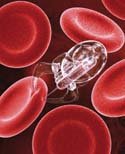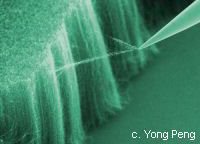Nanoforum
Call for Scientific Data on Applications of Nanotechnology and Nanomaterials used in Food and FeedThe European Commission has requested an initial scientific opinion from EFSA relating to the risks arising from nanoscience and nanotechnologies on food and feed safety and the environment. The request also asks to identify the nature of the possible hazards associated with actual and foreseen applications in the food and feed area and to provide general guidance on data needed for the risk assessment of such technologies and applications.
European Commission adopts Code of Conduct for Responsible Nanosciences and Nanotechnologies Research
Europe is in the vanguard of the emerging field of nanosciences and nanotechnologies (N&N), a developing field of science with the potential for major positive impact economically, socially and environmentally. Nevertheless, knowledge gaps remain about the impact of these technologies on human health and the environment, as well as issues relating to ethics and the respect of fundamental rights. This is why the Commission is today recommending to the Member States to adopt a Code of Conduct to govern research in this field.
European Commission gives grant to investigate transatlantic oversight of nanotechnology
Researchers at the London School of Economics and Political Science (LSE), Chatham House, Environmental Law Institute (ELI) and the Project on Emerging Nanotechnologies (PEN), an initiative of Woodrow Wilson International Center for Scholars and The Pew Charitable Trusts, have been awarded a $587,000 European Commission grant to conduct an international research project on regulating nanotechnologies in the European Union and United States.






